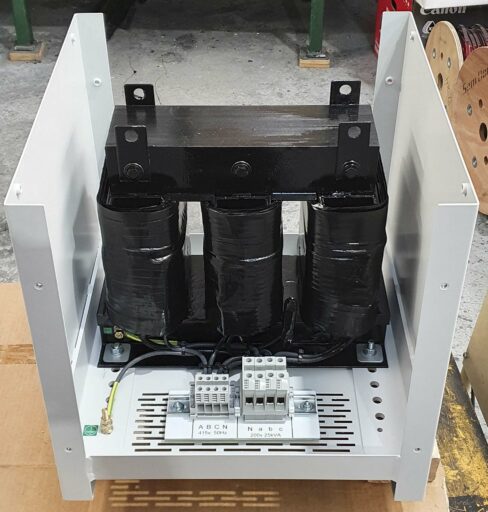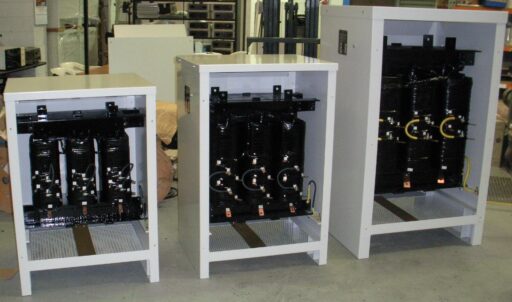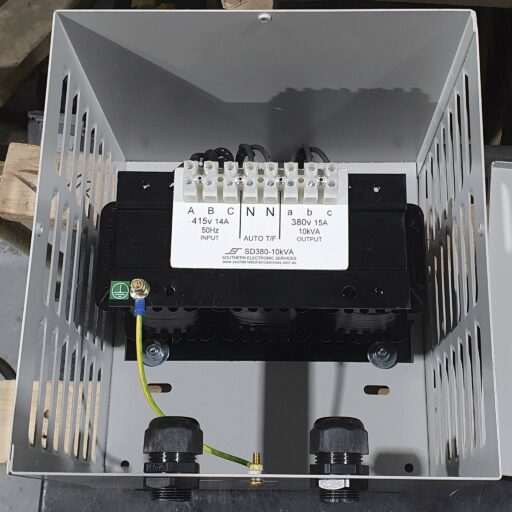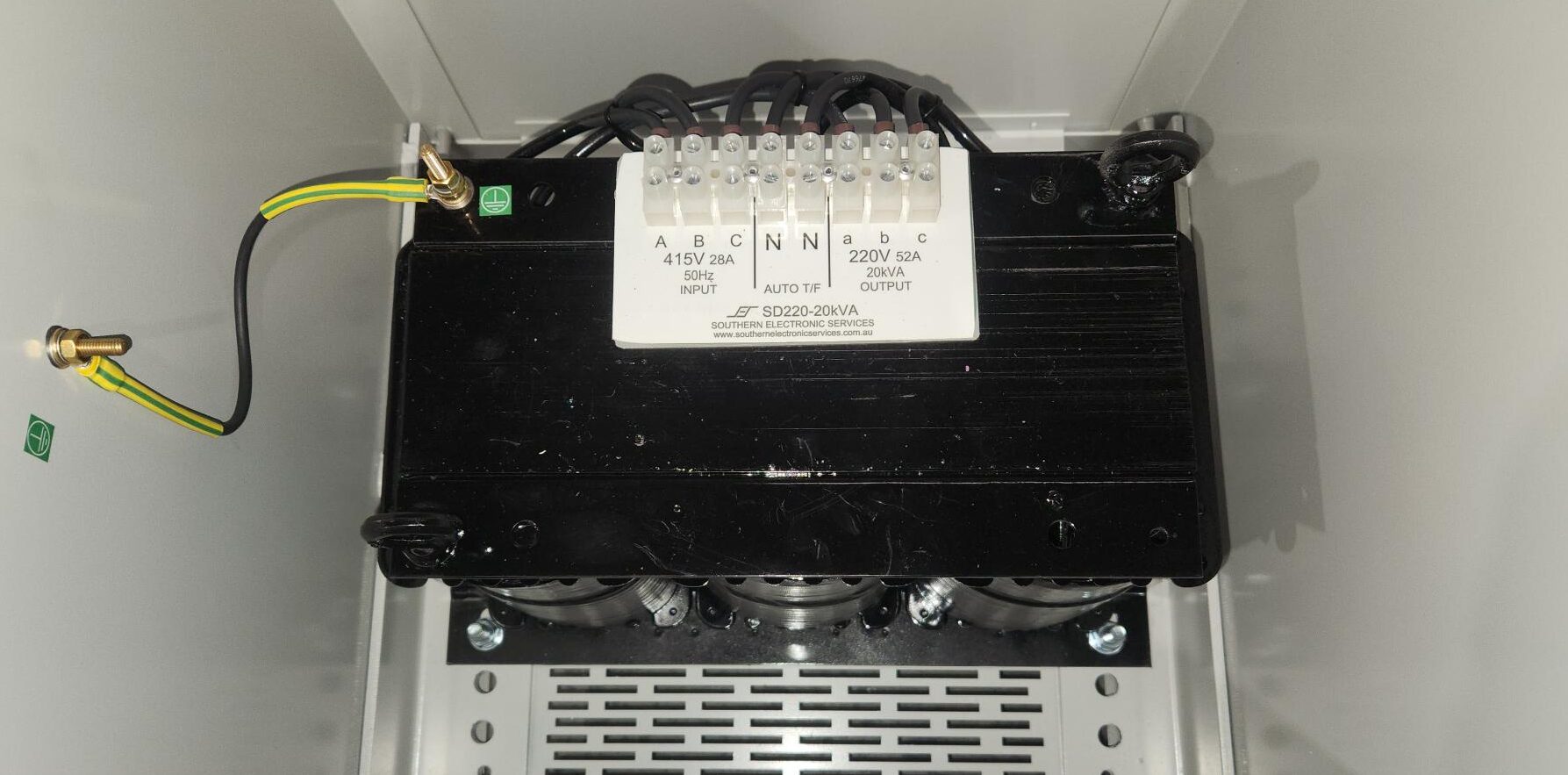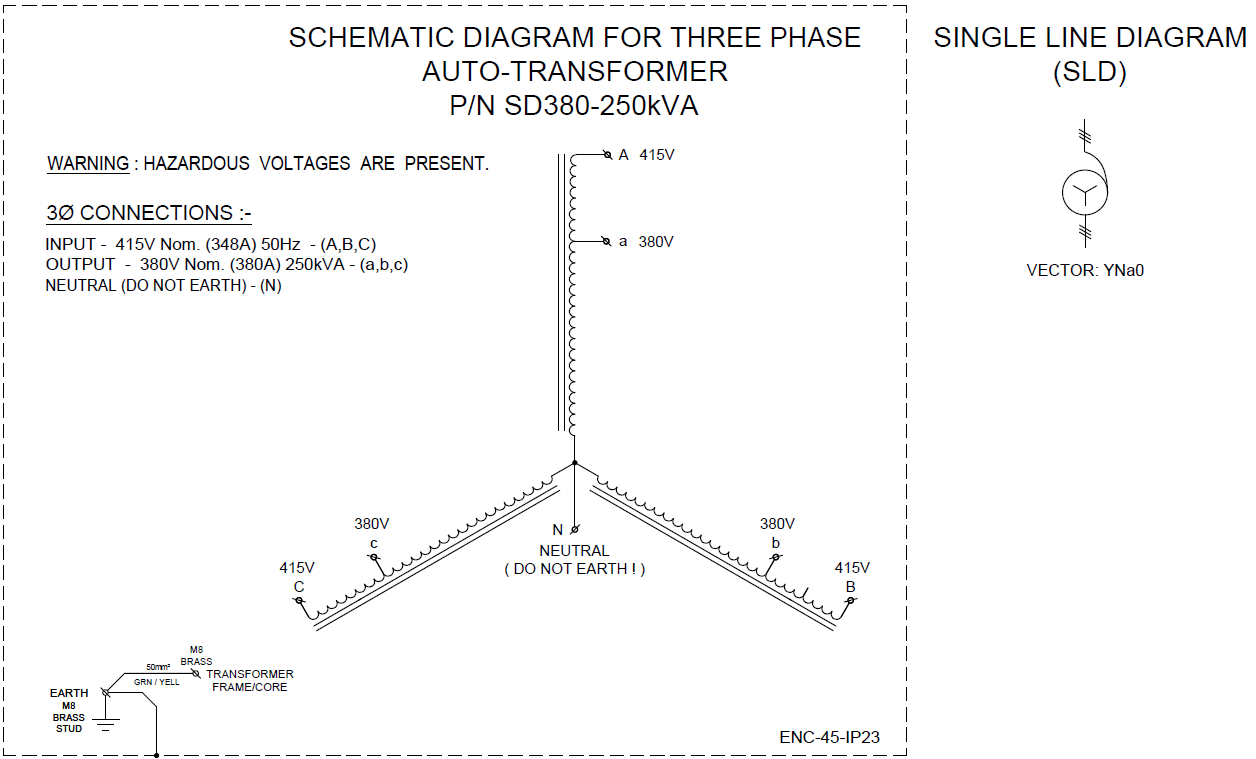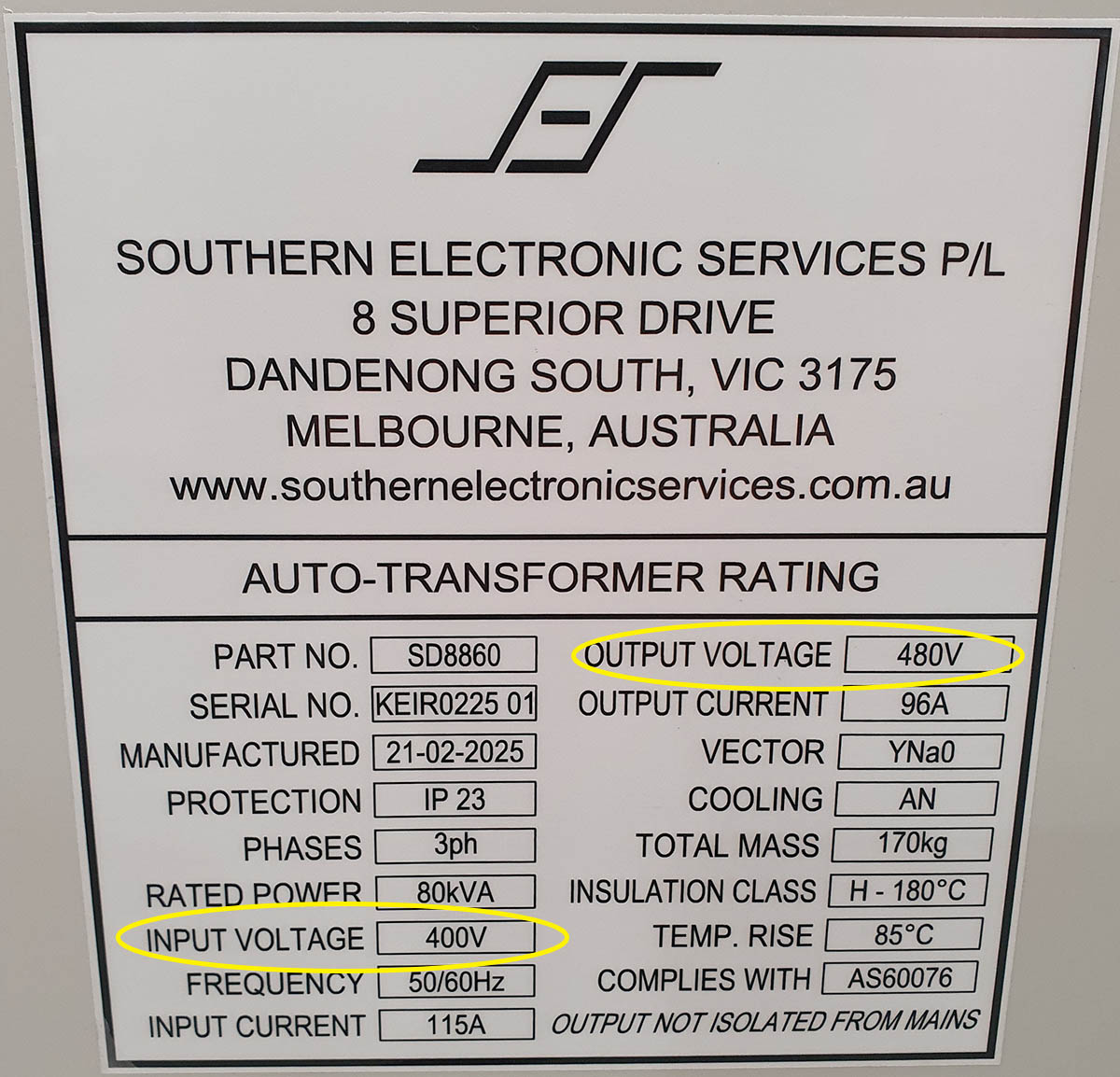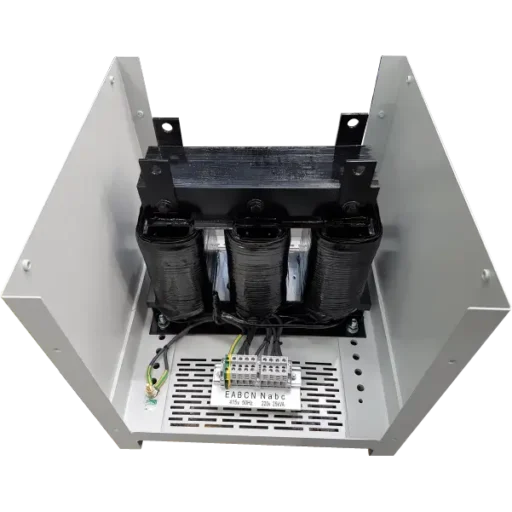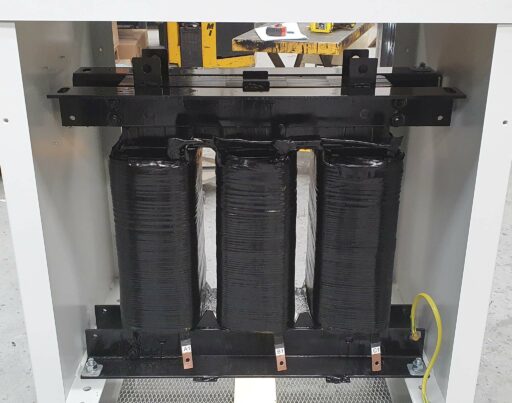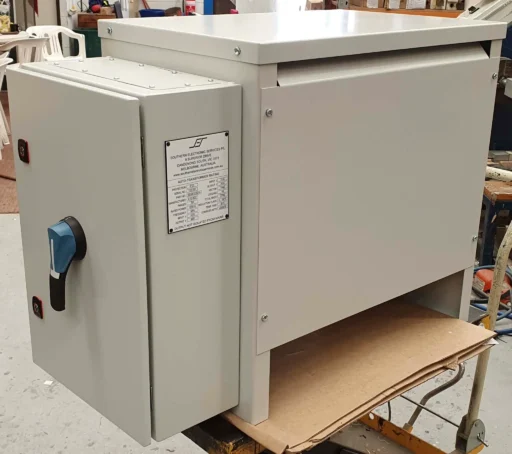Use imported 3-phase equipment in Australia
Ideal for running 3 phase equipment in Australia brought in from overseas.
Convert Australian 3-phase power (415VAC) to international 3-phase voltages with a three phase step-down transformer (voltage converter).
Our standard range covers most international voltages to Australian 3-phase 415V. Otherwise, we can easily design a customer transformer to suit your unique needs.
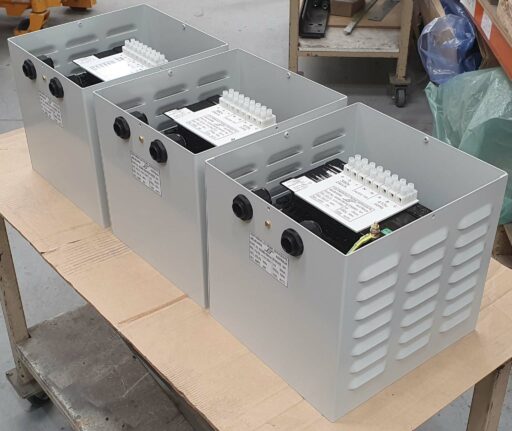
Our standard 3 phase step-down ranges are
- SD200 range – for 200V 3-phase equipment (typically Japanese, US or Canadian equipment)
- SD220 range – for 220V 3-phase equipment (typically US or Canadian equipment)
- SD380 range – for 380V 3-phase equipment (typically European, Chinese or Korean equipment)
- Custom solution – We can design and build transformers to suit your needs, just let us know your input/output voltage requirements, and your total power needs.
Send us an email with your requirements and we’ll get back to you ASAP.
Note: voltages noted are nominal. In Australia, 415v nominal ± US equipment
A step-down transformer is used to reduce the voltage from the standard mains supply to a lower, specified voltage—allowing equipment rated for a different nominal voltage to operate safely and effectively.
In Australia, the standard 3-phase supply is 415V (technically 400V nominal). However, many imported machines—especially from Europe, the US, and parts of Asia—are designed to run on different voltages such as:
380V (common across Europe and Asia)
220V (often used for US systems)
200V (frequently seen in Japanese machinery)
Step-down transformers make it possible to integrate this equipment into Australian installations without compromising performance or safety. They’re essential when your supply voltage doesn’t match the operating voltage of your equipment.
In technical terms, many 3-phase step-down transformers—such as 415V to 380V—are built as autotransformers, meaning they use a single winding with a tap point, rather than separate windings for primary and secondary. This design is more compact and cost-effective where electrical isolation from the mains is not required.
For example, a 3-phase 415V to 380V step-down transformer has windings rated for 415V (per phase), with a tap located partway along the winding to deliver 380V. This allows the same magnetic winding to serve both the input and output voltages.
Below is a basic schematic and SLD of a 3-phase autotransformer step-down design:
Step-down transformers are available in a range of configurations depending on the application, supply system, and whether galvanic isolation is required. Common types include:
1) Three-Phase Step-Down Autotransformers
These transformers use a single winding with a tap to reduce voltage—commonly from 415V down to 380V, 220V, or 200V. Autotransformers are compact, cost-effective, and efficient, and are ideal when electrical isolation from the mains is not required.
They’re widely used to power imported industrial equipment where voltage compatibility is the only concern.
2) Three-Phase Step-Down Isolation Transformers
In addition to voltage conversion, 3ph isolation transformers provide galvanic isolation between the input supply and the output system, helping mitigate electrical noise and improve safety.
They contain two separate windings—Primary and Secondary. The voltage is stepped down (or up) by adjusting the turn ratio between these windings. For example, a 415V to 380V transformer would have fewer turns on the secondary winding to achieve the reduced output voltage.
3) Single-Phase Step-Down Transformers
Designed for single-phase applications, these transformers reduce the Australian standard 240V supply to lower voltages such as 120V or 100V—commonly required for US or Japanese equipment.
They can be built as autotransformers or isolation types depending on the level of protection and performance required. Used across residential, commercial, and light industrial environments.
4) Split-Phase (Centre-Tapped) Single-Phase Transformers
These transformers provide a centre-tapped secondary output—delivering two equal voltages either side of a neutral. For example, a 240V input can produce 120V‑0‑120V output.
Common in US residential systems, this configuration is also increasingly used in Australian Stand-Alone Power Systems (SPS) and Battery Energy Storage Systems (BESS), where dual-voltage supply is needed from a single source. Check out our range of Split phase transformers, specifically designed for these applications.
Three-phase step-down autotransformers offer a practical and efficient solution when voltage adjustment is required, but galvanic isolation is not. Key benefits include:
1) Protects Equipment from Overvoltage
Many imported machines are rated for lower nominal voltages (e.g. 380V, 220V, or 200V). Directly connecting them to Australia’s 415V supply can lead to overheating, nuisance tripping, or premature failure. A step-down transformer ensures your equipment receives the correct voltage—improving performance and lifespan.
2) Compact and Cost-Effective
Autotransformers use a single winding, meaning they’re typically smaller, lighter, and more affordable than isolation transformer equivalents. This makes them ideal for space-constrained installations or when cost-efficiency is a priority.
3) Unlock Access to Global Equipment
Step-down autotransformers allow Australian users to safely operate international equipment—particularly from the US, Europe, and Japan—without costly custom rewiring or modification. This opens access to a wider range of machinery, often at more competitive prices.
4) High Efficiency and Low Losses
Because the same winding is shared between input and output, autotransformers generally exhibit lower losses and higher efficiency than isolation transformers—especially at higher kVA ratings.
5) Quick to Install and Customisable
SES autotransformers are designed for fast integration, with standard or custom voltages available across a wide power range. Whether it’s 415V to 380V, 220V, or 200V, or some other less-common voltage, we can tailor the solution to suit your equipment and installation requirements.
While this page focuses on step-down transformers, step-up transformers are equally part of our offering.
Whether you’re exporting Australian equipment to regions with higher voltage standards (such as 480V or 690V), or operating industrial systems that require a higher supply voltage, SES can design and manufacture fit-for-purpose step-up transformers.
Available in both autotransformer and isolation configurations, our step-up units are built to the same high standards—with all the same advantages:
Custom voltage ratings to suit your application
Compact, efficient designs (especially with autotransformers)
Reliable, Australian-made construction backed by a 5-year warranty
If you’re unsure whether you need step-up or step-down, get in touch—we’re happy to guide you to the right solution.
Step-down transformers are an easy and cost-effective way to step down the voltage from a high-voltage source to a lower, usable voltage. They offer protection from electrical surges and can help you save power when used properly.
At Southern Electronics, we offer step-down transformers in a variety of sizes and power ratings to meet your needs. Contact us today for more information about our step-down transformer options!
Any More Questions?
To help us provide you with the best solution to your needs please contact us
